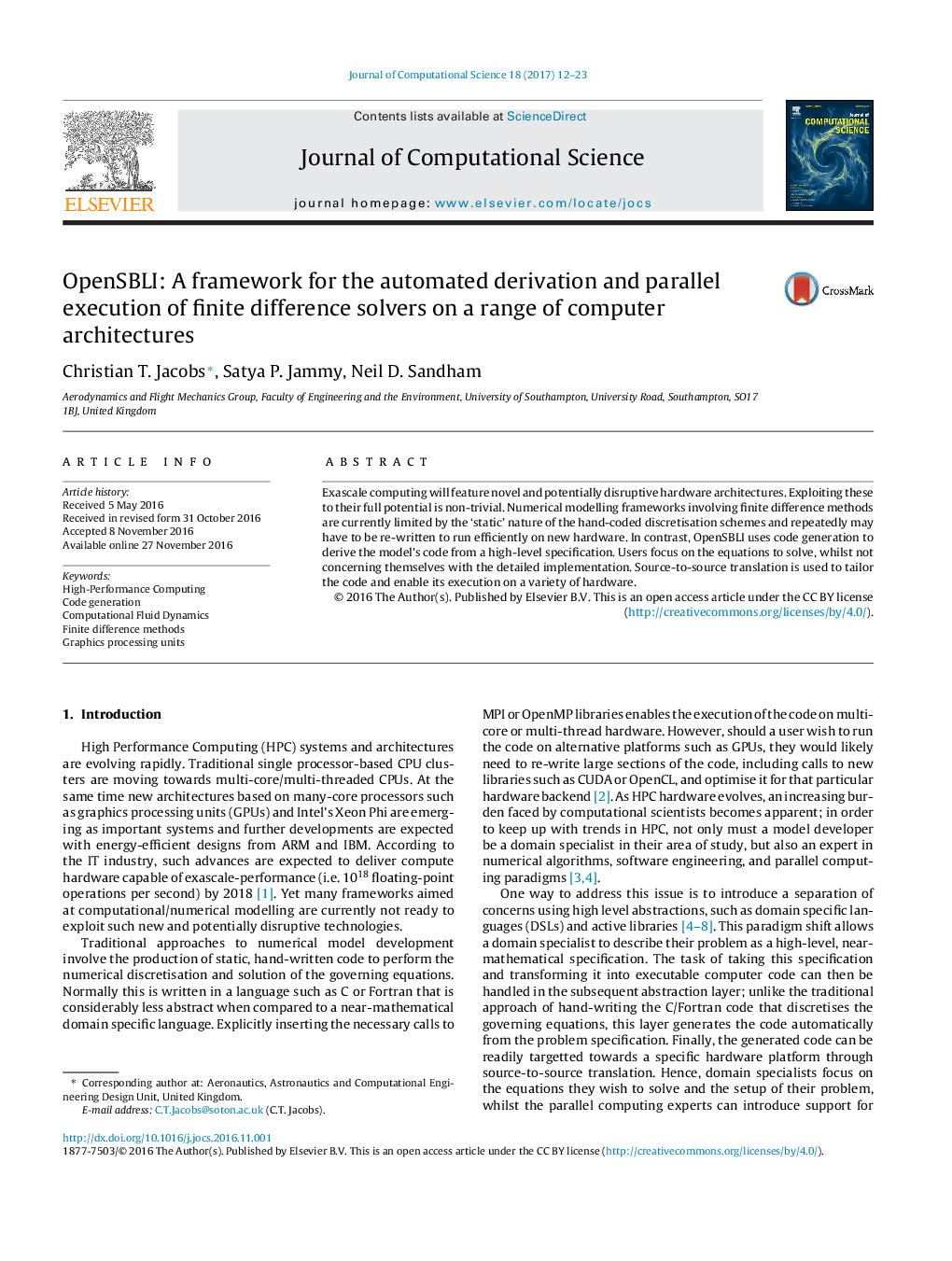| Article ID | Journal | Published Year | Pages | File Type |
|---|---|---|---|---|
| 4951046 | Journal of Computational Science | 2017 | 12 Pages |
â¢A new numerical modelling framework called OpenSBLI is introduced.â¢Users write their model equations in high-level Einstein notation.â¢The code that performs the finite difference discretisation is automatically derived.â¢Source-to-source translation targets the code towards different hardware backends.â¢OpenSBLI is verified and validated with a suite of test cases.
Exascale computing will feature novel and potentially disruptive hardware architectures. Exploiting these to their full potential is non-trivial. Numerical modelling frameworks involving finite difference methods are currently limited by the 'static' nature of the hand-coded discretisation schemes and repeatedly may have to be re-written to run efficiently on new hardware. In contrast, OpenSBLI uses code generation to derive the model's code from a high-level specification. Users focus on the equations to solve, whilst not concerning themselves with the detailed implementation. Source-to-source translation is used to tailor the code and enable its execution on a variety of hardware.
